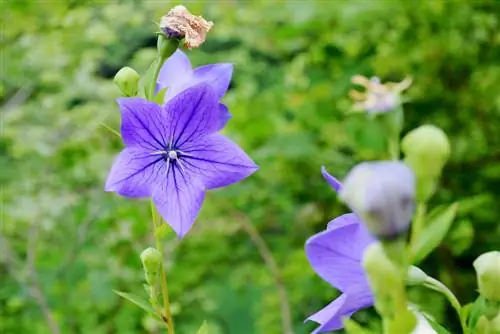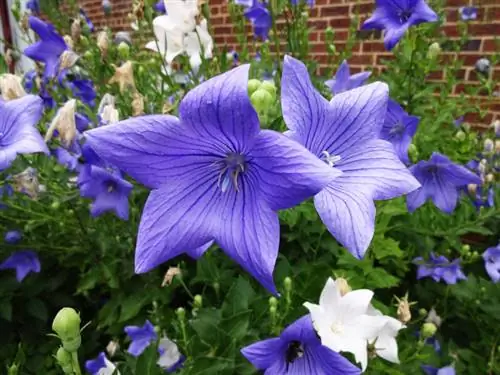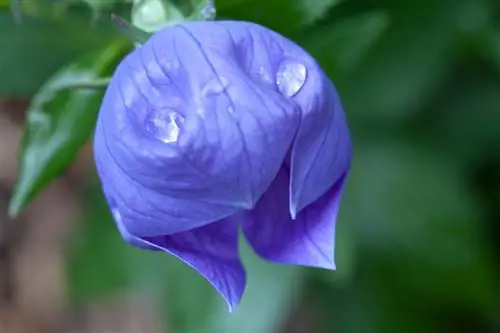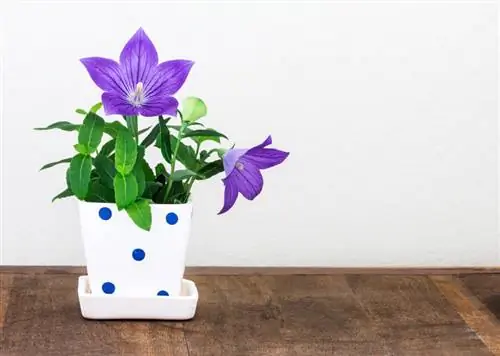- Author admin [email protected].
- Public 2023-12-25 17:45.
- Last modified 2025-01-23 11:22.
With its large cup flowers, the bee-friendly balloon flower (Grandiflorus platycodon) is a popular ornamental plant in the perennial bed or in the pot on the balcony. To ensure that the bellflower plant blooms lushly, you should clean the bellflower regularly.

Why and when should you clean balloon flowers?
Pruning balloon flowers promotes the formation of new flowers and extends the flowering period. Remove spent flower cups periodically throughout the flowering period to focus the plant's energy on flower production rather than seed production.
Why do balloon flowers need to be cleaned?
Cleaning out the balloon flower stimulates the perennial to developnew flowers. In addition, theflowering periodcan be extended by a few weeks using these care measures. If the withered flower cups are not removed, the plants will put most of their energy into them Seed formation, which is at the expense of flower formation.
When and how often should you clean balloon flowers?
Cleaning extends over theentire flowering periodThe interval at which you remove the withered flowers depends on how well your balloon flower blooms. It is important that you cut or pinch off the spent flower cups as soon as they have bloomed. In this way you counteract the formation of seeds and it also looks prettier. If you want to propagate the balloon flower, you should leave a few flowers so that you can harvest seeds from the ripe capsules.
Does cleaning damage the development of the balloon flower?
Cleaning out the hardy balloon flower may seem drastic, butdamageit doesnot to the plant. After all, to put it simply, this is just a type of energy diversion during the growing season.
Tip
Cutting back balloon flowers
Although cleaning out the balloon flower is a pruning measure in the broadest sense, the annual pruning should only be done in early spring. If you leave the withered above-ground parts of the plant standing over the winter, they will protect the balloon flower from cold and frost. In addition, the plant can draw on the remaining nutrients.






